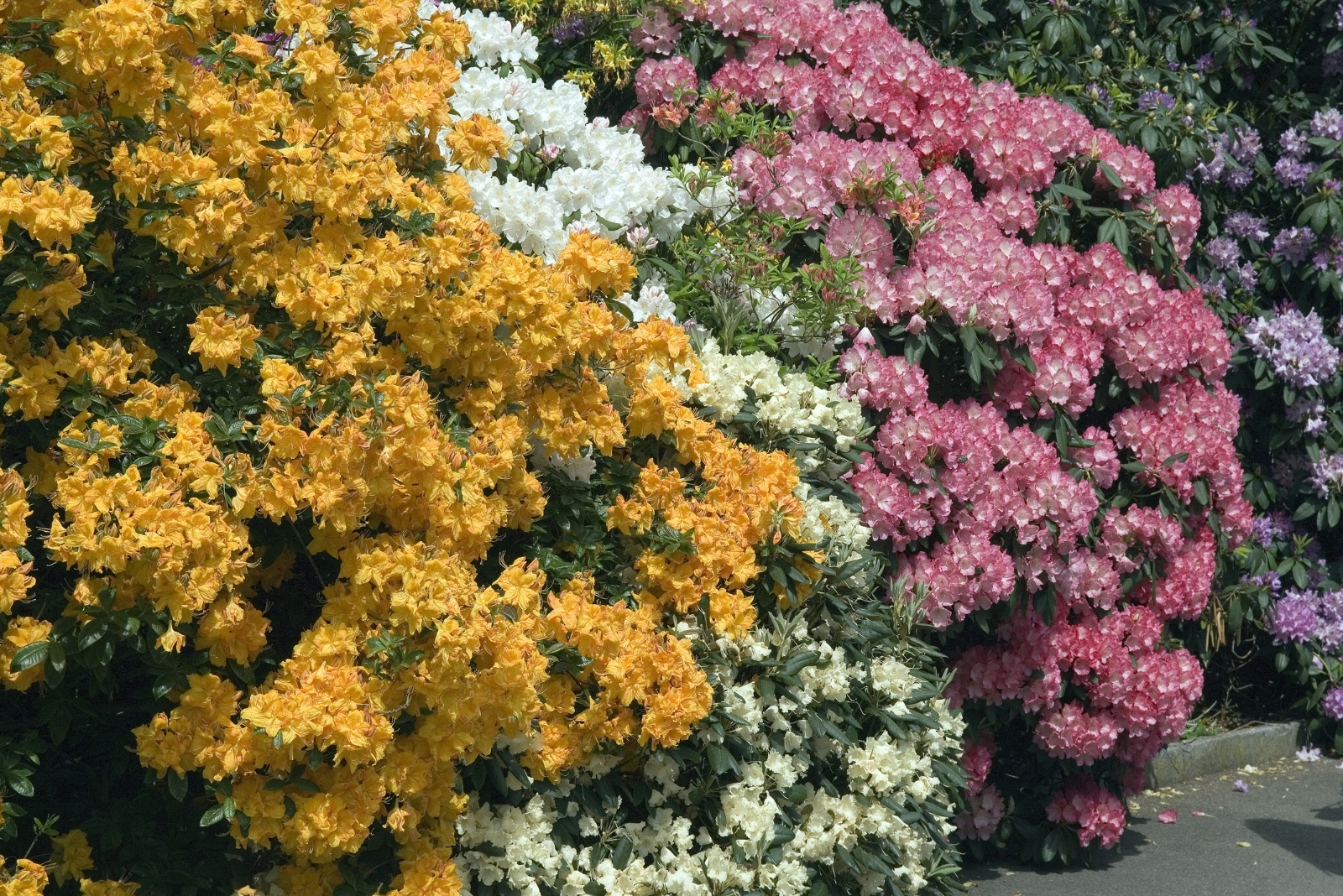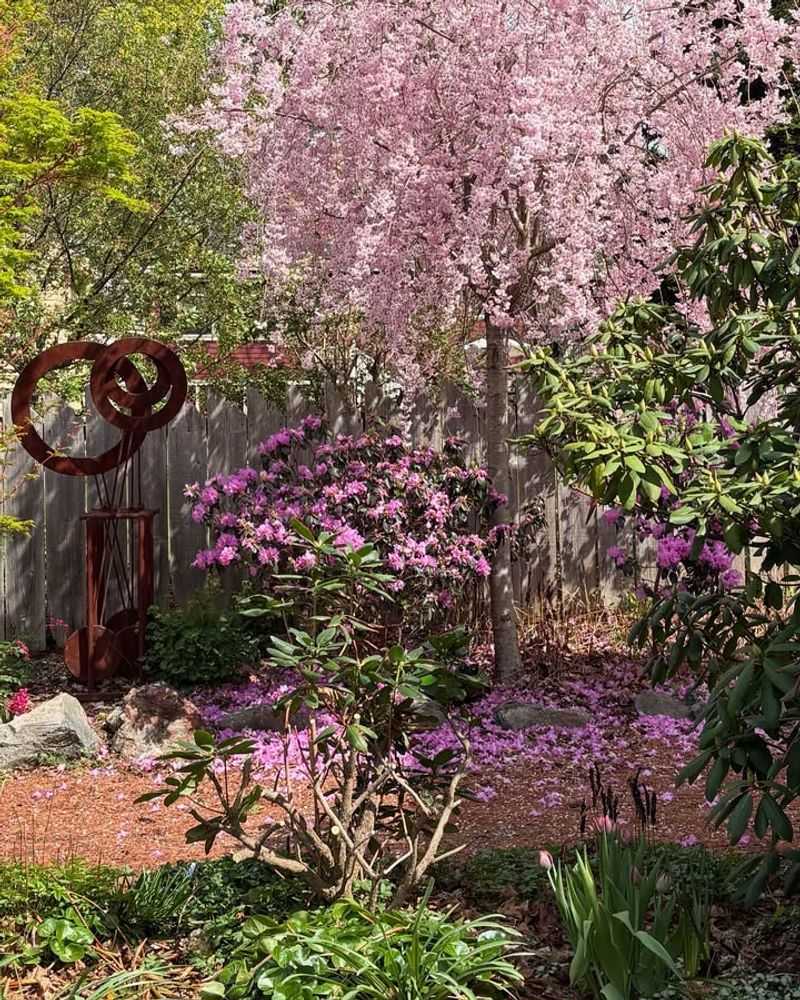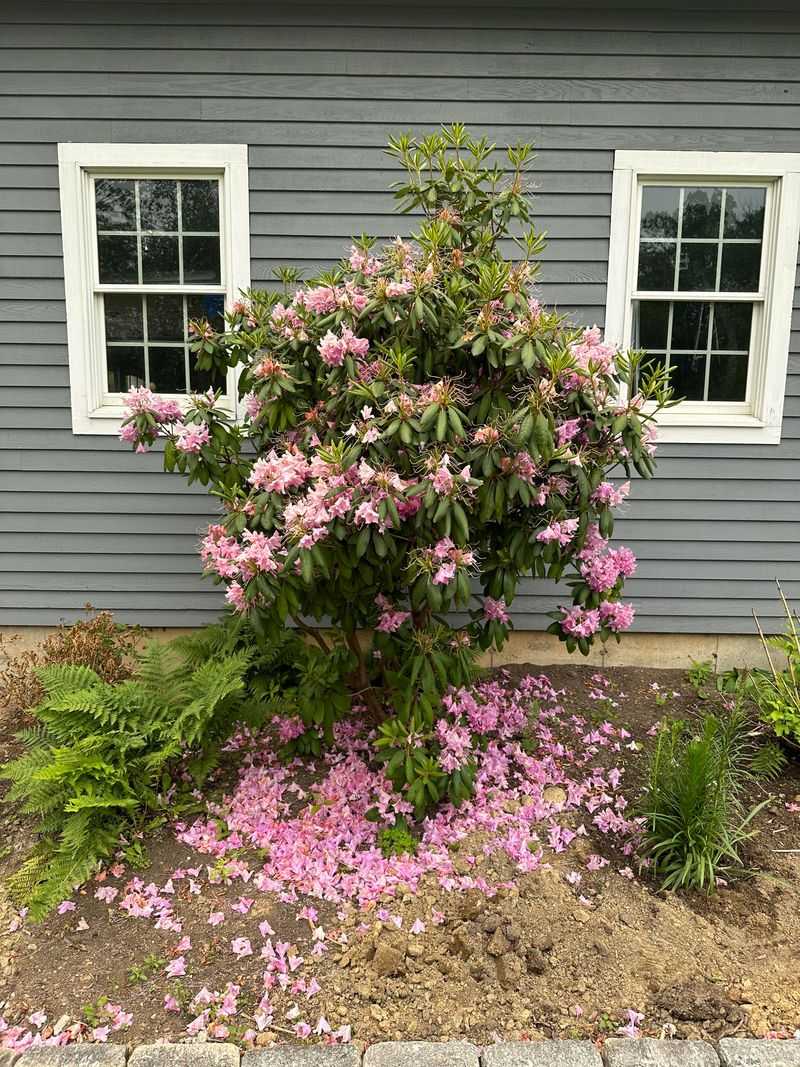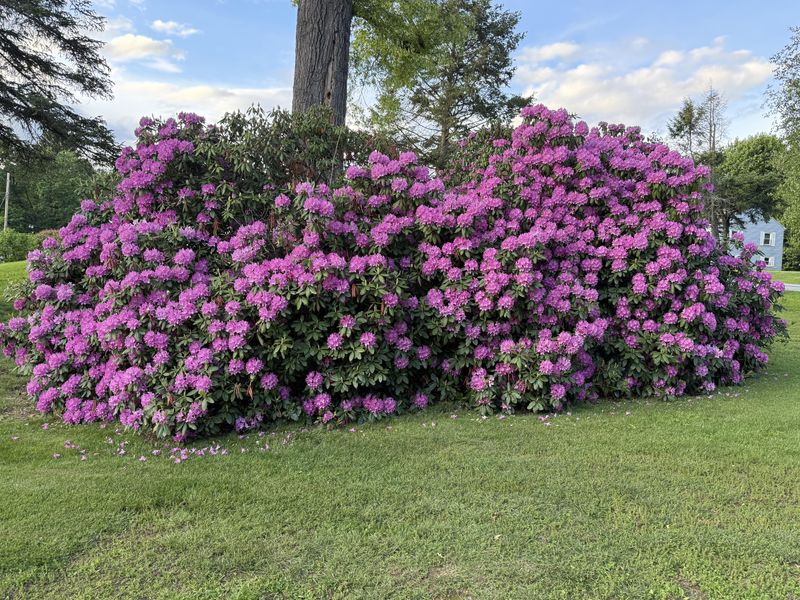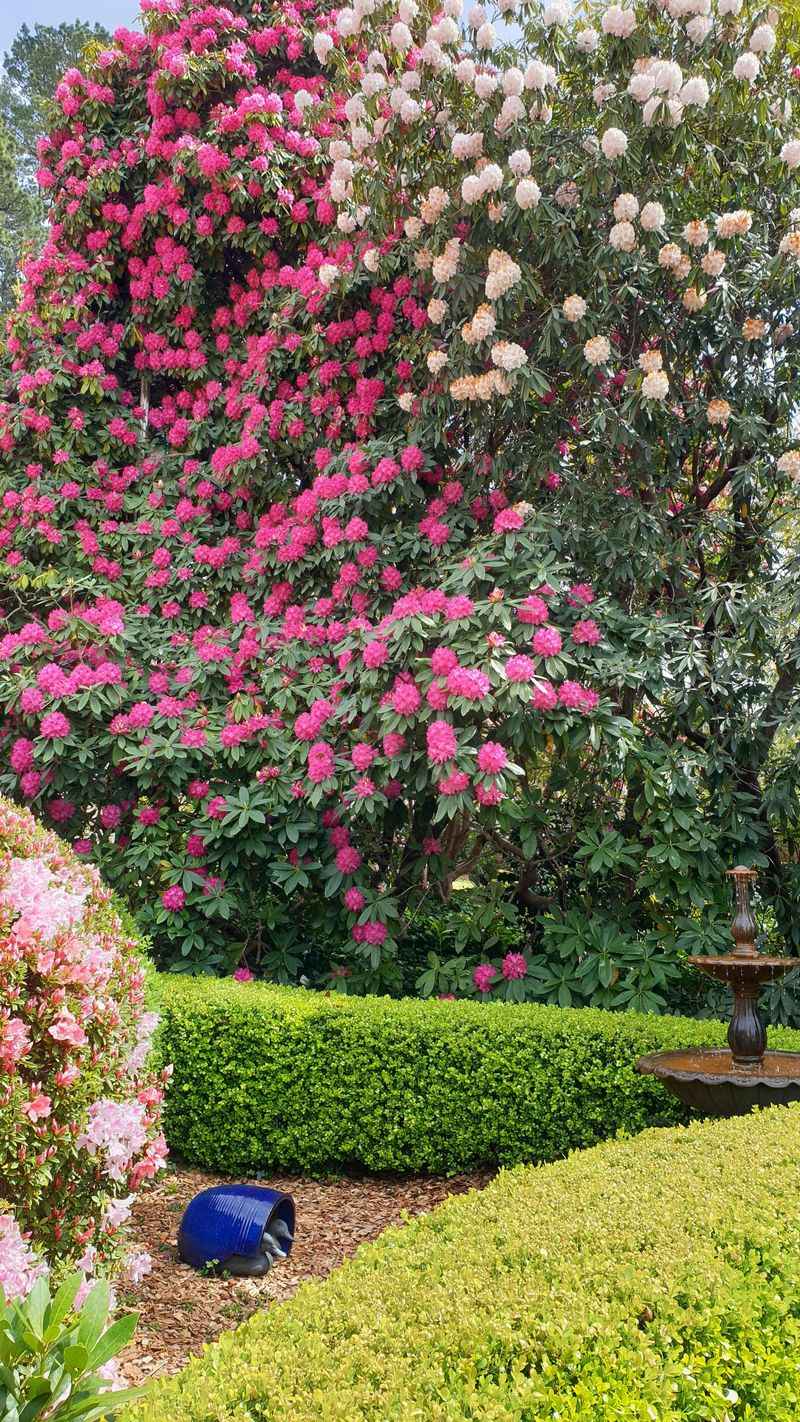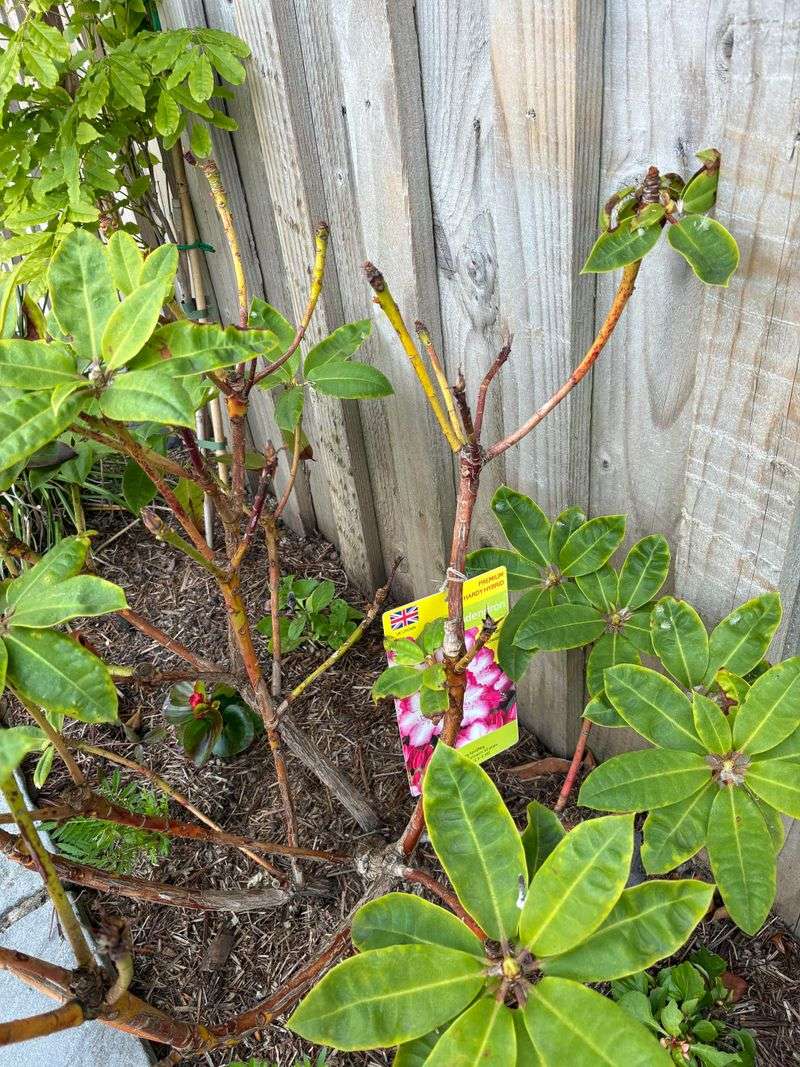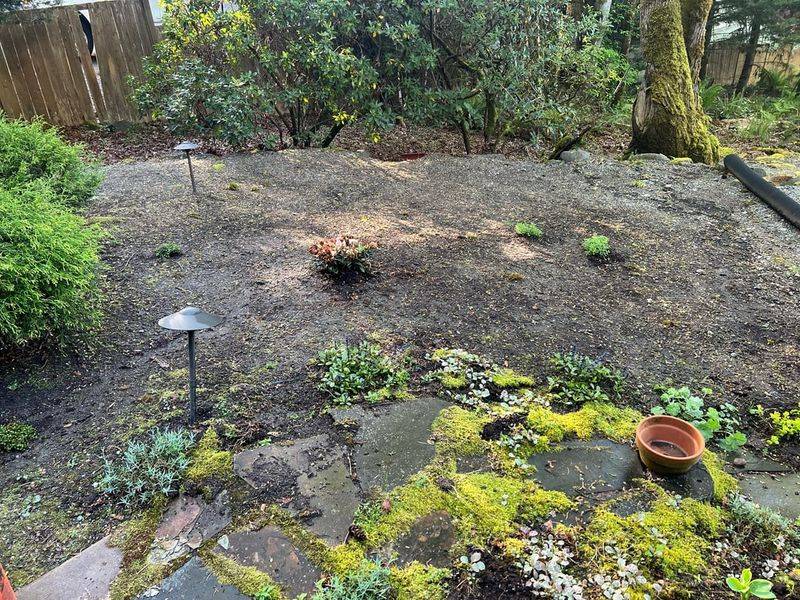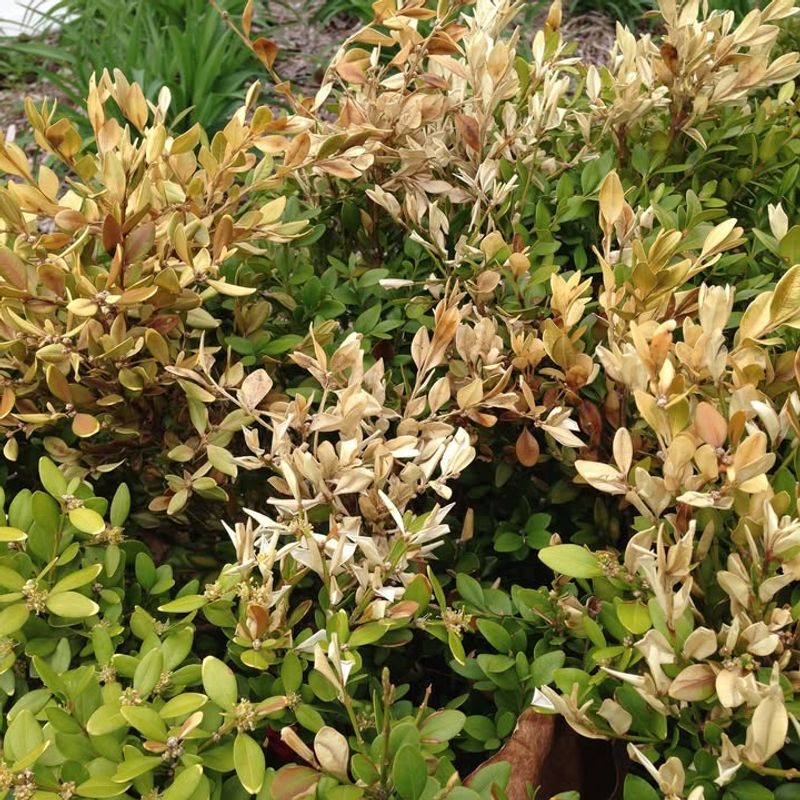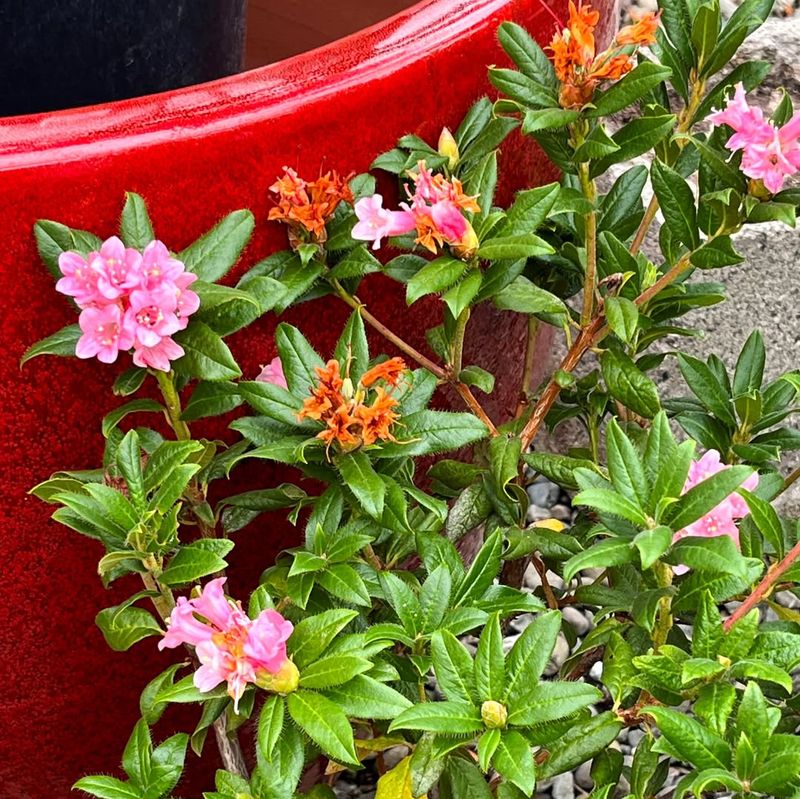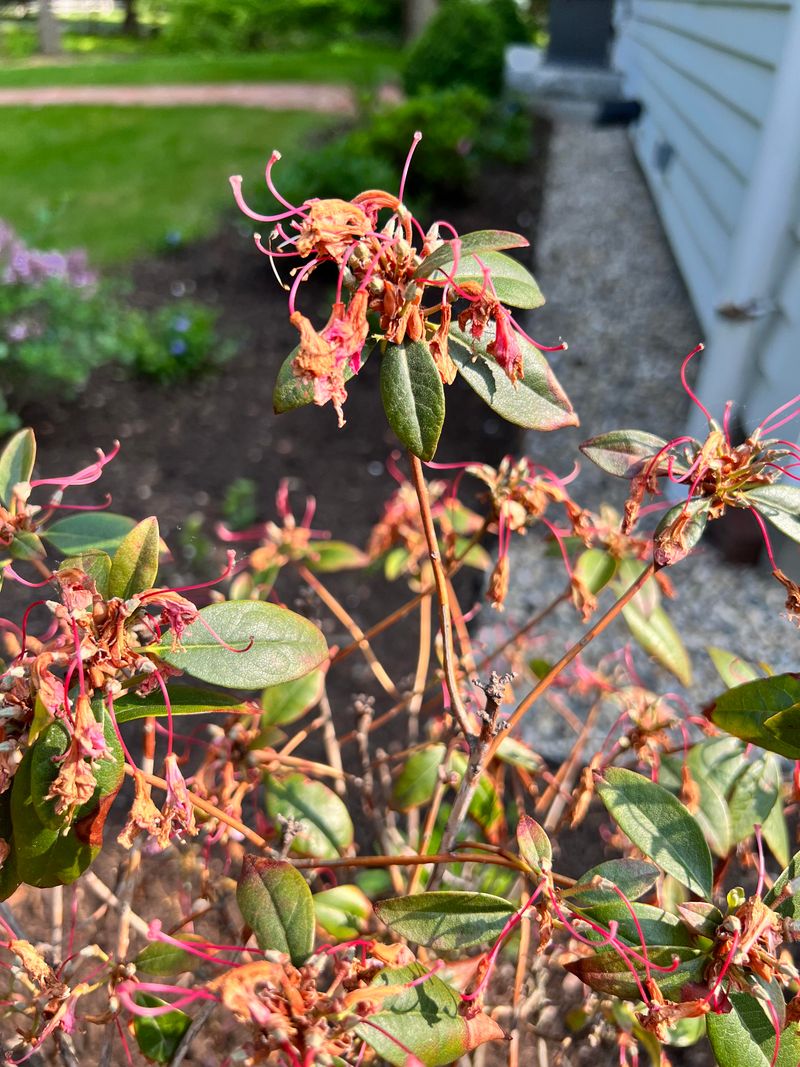Rhododendrons and azaleas need a little extra attention in fall to stay healthy through winter. California’s climate gives these shrubs a unique set of needs this season.
Knowing how to care for them ensures blooms for years to come. Here are 9 tips every California gardener should know.
1. Mulch Application
Adding a fresh layer of mulch helps retain moisture during California’s dry fall months. Pine needles or bark work perfectly for these acid-loving plants.
Spread a 2-3 inch layer around the base, keeping it away from the stems to prevent rot. Many Southern California gardeners find this helps moderate soil temperature fluctuations.
2. Watering Adjustments
Despite cooler temperatures, California’s autumn can still be quite dry for these moisture-loving plants. Check soil regularly and water deeply when the top inch feels dry.
Northern California gardeners should taper watering as rains begin, while those in drier regions might need to maintain consistent irrigation through November.
3. Pest Inspection
Fall is prime time for pests seeking winter shelter in your plants. Look under leaves for lace bugs, spider mites, and scale insects that love rhododendrons.
Many Central California gardeners use a gentle spray of water to dislodge these pests. For persistent problems, horticultural oil applied before winter provides effective, non-toxic control.
4. Fertilization Timing
Stop feeding these plants by early fall to prevent tender new growth that would suffer in winter. California gardeners should switch to a low-nitrogen, high-phosphorus fertilizer if feeding is necessary.
Even in California’s mild coastal regions, it’s best to hold off on fertilizing until late winter or early spring. This timing supports healthy bud development without stimulating vulnerable growth.
5. Pruning Practices
Light pruning in fall helps shape your plants without stimulating new growth. Remove dead or crossing branches to improve air circulation and overall plant health.
Many experienced California gardeners wait until after flowering to do major pruning. For fall maintenance, just snip away damaged parts and save the structural cuts for spring.
6. Soil Testing
Fall is perfect for checking your soil pH, as rhododendrons and azaleas prefer acidic conditions between 4.5-6.0. California’s varied soils often need adjustment for these plants to thrive.
Gardeners across the Golden State can add sulfur or acidic amendments if tests show alkaline soil. Making these adjustments now gives them time to work before spring’s growth cycle begins.
7. Wind Protection
California’s autumn Santa Ana winds can damage delicate rhododendrons and azaleas. Consider installing temporary burlap screens on the windward side of your plants.
Many successful Southern California gardeners place these shrubs where they receive protection from buildings or larger plants. This natural windbreak strategy works beautifully in most Mediterranean climate zones.
8. Container Care
Potted rhododendrons need special attention as temperatures fluctuate in California’s fall months. Move containers to protected locations where they receive morning sun but afternoon shade.
Many Bay Area gardeners insulate pots by wrapping them with bubble wrap or burlap. This simple trick prevents root damage during occasional cold snaps, even in California’s generally mild climate.
9. Deadhead Blooms
Remove spent flowers that may have been missed earlier in the season. This prevents seed production and redirects energy to root development and next year’s buds.
California gardeners from San Diego to Eureka find this practice especially beneficial. Our state’s long growing season sometimes produces late blooms that won’t have time to develop seeds before winter arrives.

